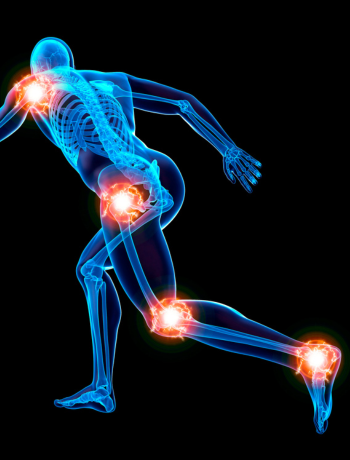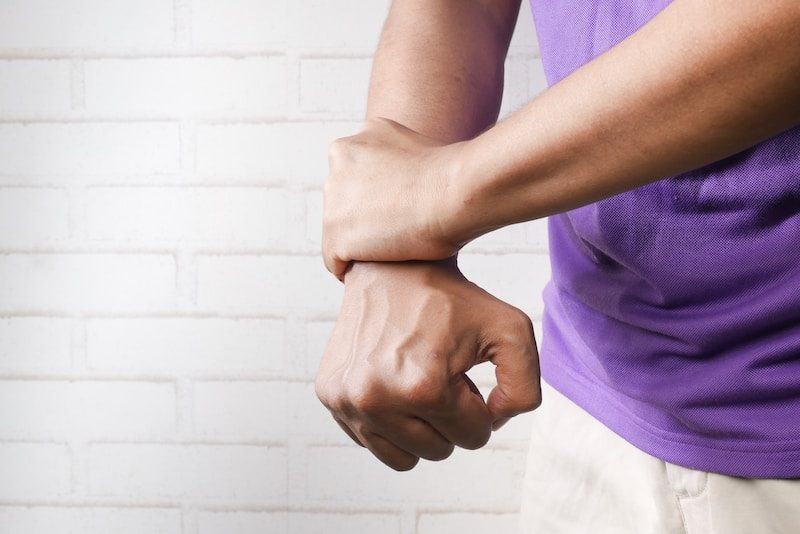The Science Behind Clicking Joints:
Snap, Crackle and Pop
Have you ever wondered why your joints click or pop when you move them? Our clients are often alarmed by this phenomenon, especially with hypermobile joints, but what exactly is it that’s making this noise, and is it anything we should be concerned with?
It's quite common to hear your fingers, knees, or other joints make these sounds as you stretch, bend, or twist. While some may find it satisfying, others worry that it might be a sign of an underlying problem. Let’s look at the science.



The Mechanics of Joint Clicking
Joint clicking, also known as crepitus, can occur when moving a joint. It covers a range of audible sounds from popping, crackling, creaking, grinding or crunching. I like to call it the rice Krispies- the snap, crackle and pop of a joint in motion. It typically arises due to an excess of joint movement, which makes it of special relevance to those with Hypermobility Spectrum Disorders. Any joint can be affected by crepitus, but most commonly found in the knees, neck, shoulders, and ankles. It is a perfectly normal sensation but can also be a flag for an underlying issue.
Synovial Fluid and Gas Dissolution
Within our joints we have a viscous liquid called synovial fluid. This fluid lubricates the joint and provides nutrients to the cartilage that covers the bones.
When a joint is moved and subject to pulling forces, such as when you crack your knuckles or stretch your leg, the pressure within the joint decreases. This reduced pressure causes gases, primarily nitrogen (including oxygen and carbon dioxide), that are dissolved in the synovial fluid to form bubbles. These bubbles then quickly collapse or burst, and it was generally thought that it was the bursting bubble that created the familiar popping sound.
Within the concept of tribonucelation, studies have shown that remarkably, the bubble persists beyond the moment of sound generation, indicating that the sound isn't solely attributed to the bubble's collapse. The bubble vanishes when the pulling or distraction force ceases, yet the joint space before and after remains relatively unchanged.
The exact mechanisms and processes behind joint cracking are still not fully understood, and there's ongoing research to explore this phenomenon further. However, the release of gas bubbles is one commonly accepted explanation.
Cartilage Movement
Another source of joint clicking can be the movement of cartilage within the joint. In some cases, a piece of cartilage may move or get caught in an abnormal position, leading to a clicking sound when the joint is moved.
Tendons and Ligaments
When a tendon or ligament moves over a bone or another structure, it can make a snapping or popping noise. Of course, those of up with hypermobility have more laxity in our ligaments and tendons, causing the joints to have a wider range of movement which in turn can often lead to an increased incidence of this clicking and snapping sound.
Hips and shoulders are often key sites due to their ball and socket versatility, but knees, ankles, wrists – you name it – can also make themselves heard.
Arthritis
Osteoarthritis or rheumatoid arthritis, can affect the joints and cause clicking sounds due to cartilage deterioration.
Inflammation
Inflammation of the synovial membrane or the tissues surrounding a joint can cause increased friction and may produce clicking sounds.
Bursitis is the inflammation of a bursa, which is a small, fluid-filled sac that acts as a cushion between bones and tendons or muscles around a joint. It is common among those with hypermobility and listed as a soft tissue lesion and one of the minor diagnostic criteria in the Beighton Score. The inflammation can cause pain and tenderness in the affected area. The synovial fold of the bursa may cause clicking and impingement pain with bursitis.
Is Joint Clicking Harmful?
In most cases, joint clicking is harmless and not indicative of any serious health issues. It is merely a by-product of the normal motion of joints and the release of gas or fluid. However, in some cases it may potentially be a cause for concern.
Here are some factors to consider:

Pain and Swelling:
If joint clicking is accompanied by pain, swelling, or limited joint mobility, it may be a sign of an underlying issue, such as arthritis, ligament damage, or cartilage problems.
Repetitive Clicking:
If a joint clicks consistently during the same movement, it could indicate that something is not moving smoothly within the joint, potentially causing wear and tear.
Trauma:
A history of joint trauma, like a previous injury, could increase the likelihood of joint clicking, especially if it has disrupted the normal structures of the joint.
When to seek medical attention
If joint clicking is associated with pain, swelling, or limitations in joint function, it is advisable to consult a medical professional. They can perform a thorough examination, which may include X-rays or MRIs, to determine the cause of the symptoms and recommend appropriate treatment.
The key question I ask clients when they're concerned about clicking joints is "Does it hurt?" If the answer is no, don't fear the sound of your body doing what it was built to do - to MOVE.
